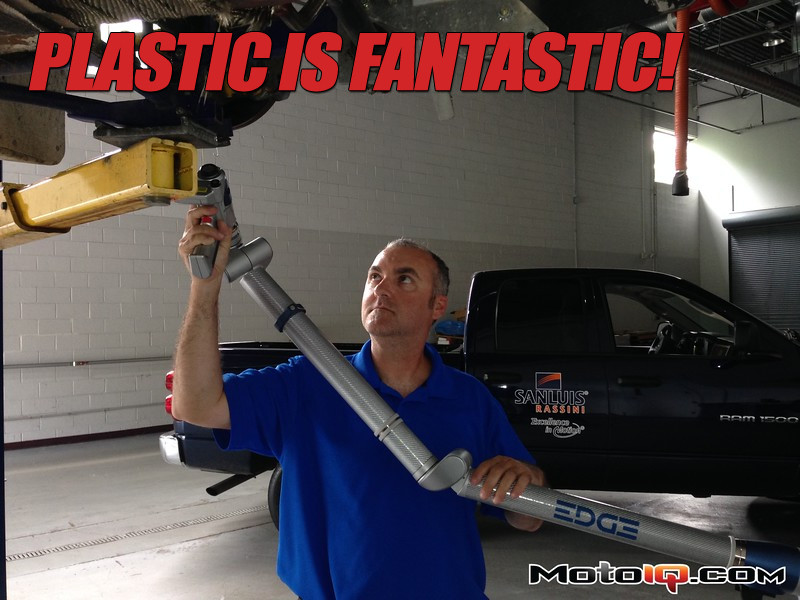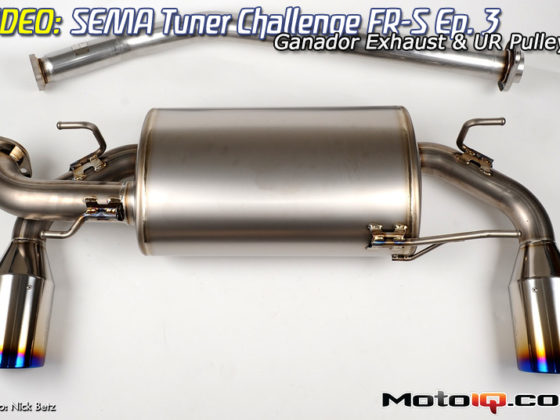,
In the previous article, I mentioned that there is actually a lot of technology that goes into the manufacture of fiber used for composites. We will be working with PPG glass fibers in this case, and, besides the chemistry that goes into the making of the individual glass fibers themselves, there is also an entire field of science that looks specifically at the chemical coatings that are applied to the surface of the fibers. These coatings, usually referred to as “sizing,” usually serve several different purposes. First and foremost, sizings serve as a method to hold individual fibers together into bundles, called rovings. These bundles are similar in nature to yarn or rope – which are made by combining a bunch of very thin individual fibers into a thickness that can be readily used. The sizings not only hold the individual tiny fibers together in a roving, but they also help protect the fibers from abrasion, breakage, and help to make the rovings easier to handle in different manufacturing processes. Another very important function of the sizing chemistry is to help make the fiber compatible with the type of resin it will be combined with. These particular chemical recipes are referred to as “coupling” agents – they insure that the resin wets the surface of the individual fibers and sticks tenaciously. If you’ve worked with composites, you know that proper wet-out of the fibers is important for good strength, and the proper coupling agents make sure this happens. Rovings that are treated for use with polyester resins, for example, will not work well with a polyethylene resin.
 This is the basic form of composite material we’re going to be utilizing for our application – unidirectional “tape” – which we manufacture by aligning and tensioning the rovings side by side (sometimes up to 250 individual roving packages at a time), impregnating them with the melted plastic pellets, and then winding this material up in continuous rolls that are either 12.5” or 25” wide, and thousands of feet long. This is a small section of tape, to show how the fibers are aligned and what the product looks like.
This is the basic form of composite material we’re going to be utilizing for our application – unidirectional “tape” – which we manufacture by aligning and tensioning the rovings side by side (sometimes up to 250 individual roving packages at a time), impregnating them with the melted plastic pellets, and then winding this material up in continuous rolls that are either 12.5” or 25” wide, and thousands of feet long. This is a small section of tape, to show how the fibers are aligned and what the product looks like.The real secret to making high strength composites, though, besides choosing the proper fibers and resins that work with them, is in the alignment, tensioning, and continuity of the fibers. Fiber reinforced composites have their highest strength parallel to the direction of the fibers, and the straighter the fibers are, the stronger the finished product will be. For example, if you’ve worked fiberglass and resin, you know that the cheapest (and weakest) fabric you can use is random mat, which consists of chopped fiber that is randomly oriented and held together in sheet form by an adhesive chemical. The longer the chopped fibers are, the stronger the finished composite generally is. Although chopped random mat composites are generally at the weaker end of the composite scale, they tend to have fairly equal strength in any direction because of the random orientation of the fibers.
 This is an example of woven material, before it has been saturated with thermoset resin. The individual rovings pass over and under each other, which means they’re not highly tensioned or perfectly aligned. Woven materials are certainly appropriate for lots of applications, especially if you need strength in both the 0 and 90 degree directions.
This is an example of woven material, before it has been saturated with thermoset resin. The individual rovings pass over and under each other, which means they’re not highly tensioned or perfectly aligned. Woven materials are certainly appropriate for lots of applications, especially if you need strength in both the 0 and 90 degree directions.If you want a stronger finished product, you usually use a woven fabric (sometimes called woven roving). Weaving uses continuous fibers, and the weaving process helps maintain some alignment of the fibers, as well as some tension control. Since fibers in a woven material usually run at 90 degrees to each other, they have their greatest strength along the 0 and 90 degree axes, and will not be as strong along a 45 degree axis – although they are still usually stronger than random mat composites. There are some fabrics available with different weave angles – but they are not very common.
 If we need strength and stiffness in both the 0 and 90 degree directions, like a woven, we can easily get it with our unidirectional material. We take two layers of material, orient them perpendicular to each other, and, using heat and pressure, we laminate them together. We call it X-ply. It’s a fast and easy process, and it yields a material that has good properties in both directions. Because the fibers in each layer stay aligned and don’t bend to pass over and under each other, we have a material that is almost always stiffer and stronger than a woven composite of the same materials.
If we need strength and stiffness in both the 0 and 90 degree directions, like a woven, we can easily get it with our unidirectional material. We take two layers of material, orient them perpendicular to each other, and, using heat and pressure, we laminate them together. We call it X-ply. It’s a fast and easy process, and it yields a material that has good properties in both directions. Because the fibers in each layer stay aligned and don’t bend to pass over and under each other, we have a material that is almost always stiffer and stronger than a woven composite of the same materials.If you want the highest strength in a composite, you generally want to work with continuous fiber unidirectional materials. These materials have all of their fibers aligned parallel to each other, and, all other things being equal, have the highest strength to weight ratio of all (in a direction parallel to the fiber alignment). Suppose, though, you need strength in both the 0 and 90 degree directions, like a woven material? Then you would add another layer of unidirectional material perpendicular to the first. When you do this, you actually have a material that is stronger than a 0/90 woven material – and why is that? When you weave fibers, they have to bend to pass over and under each other, which means they are no longer truly straight. This bending of the fibers is known as “crimp,” and crimp is a property that weakens fiber strength for a few reasons that we won’t go into here. Because there is no crimp, a 0/90 construction of unidirectional materials can match the strength of a woven material with less weight.
 The rolls on the right are 25” wide unidirectional tape, thousands of feet long. Each individual fiber runs the entire length of the roll. The longer rolls of material, to the left, are actually rolls of X-ply. We can make those materials up to 10 feet wide, and we can make these laminated materials in multiple layers (not just two plies of 0 and 90 degrees, but many more plies, and on differing angles, such as 45 or 60 degrees). When multiple layers get thick, we make them into sheets since they are too stiff to wind into a roll.
The rolls on the right are 25” wide unidirectional tape, thousands of feet long. Each individual fiber runs the entire length of the roll. The longer rolls of material, to the left, are actually rolls of X-ply. We can make those materials up to 10 feet wide, and we can make these laminated materials in multiple layers (not just two plies of 0 and 90 degrees, but many more plies, and on differing angles, such as 45 or 60 degrees). When multiple layers get thick, we make them into sheets since they are too stiff to wind into a roll.One of the biggest advantages of continuous fiber unidirectional composites is this – parts can be designed to have the desired strength in the direction needed, without adding unneeded weight by having fibers oriented in a direction where you don’t really need strength. Suppose a part you are designing needs most of its strength along its length (we’ll call that the 0 degree axis), and in a direction 23 degrees from the zero axis. In addition to the amount of material you need for the desired strength along the length, you can add some layers on a 23 degree bias to give you the needed properties. A woven fabric can’t do that for you without adding extra weight you don’t need. Unidirectional materials allow you to design your composite as efficiently as possible, without adding unnecessary weight. Of course, how you layer the materials (which is known as the “layup”) and in what order you do it depends on lots of factors, which can get complicated.
 A close up of a thicker sheet of laminated material – actually 16 layers of alternating 0 degree and 90 degree tape. This is actually the material that we’re using for the front splitter on the car.
A close up of a thicker sheet of laminated material – actually 16 layers of alternating 0 degree and 90 degree tape. This is actually the material that we’re using for the front splitter on the car.While this is a very basic view of composite technology, hopefully it gives you a better understanding of the types of materials available, and their potential uses. There are lots of different fiber reinforcements – such as carbon, e-glass, s-glass, basalt, and aramids (like Kevlar), as well as myriad resin systems, the combinations of which are best determined by the type of application and the environment it will be exposed to. It’s a rapidly evolving field, with new materials being developed every day, and hopefully you’ll enjoy exploring it further on your own.




1 comment
Hi, I’m Eric Chin. Technology manager of Avient Taiwan.
We have a TPU film manufacturer who is interested in the PolyStrend technology and they would like to ask if this technology can combine with their TPU laminated film product to achieve extra strength and light weight.
Would you provide a suitable technical contact window for further discussion with the technical part with our customer?
Thanks and Regards